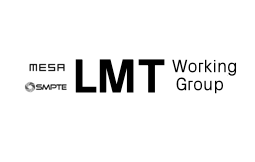
Disney’s Zepnick Named LMT Co-Chair
Jaclyn Zepnick, Senior Data Librarian with Disney Media and Entertainment Distribution at The Walt Disney Co., has been appointed co-chair of the Language Metadata Table (LMT) Working Group.
She joins Meg Morrissey, contributor to Netflix and senior DAM architect for MediaValet, and Yonah Levenson, VP of group and director of information services at Ad-ID, as co-chairs of the LMT.
First joining Disney in early 2019 as a Metadata Specialist for direct-to-consumer and international initiatives, Zepnick also served as Senior Data Librarian of Enterprise Metadata Services before her current role.
 Developed by WarnerMedia’s HBO and launched with MESA in mid-2018, the LMT was created to provide a single, unified standard of language terminology, offering a sole source of reference for language codes for use throughout the media and entertainment ecosystem.
Developed by WarnerMedia’s HBO and launched with MESA in mid-2018, the LMT was created to provide a single, unified standard of language terminology, offering a sole source of reference for language codes for use throughout the media and entertainment ecosystem.
An expandable mapping resource — essentially, a human readable reference table — LMT organizes language metadata for more than 275 language codes and display values (with roughly 100 more currently being researched).
The resource seeks to unite data specialists with a single, open-source table of language metadata values for the industry.
The LMT is co-sponsored by MESA as well as SMPTE. It has been submitted to become a formal SMPTE standard and is making its way through the approval and adoption process.
Planning and leading the LMT Working Group meetings, along with updating the LMT with additional languages and presentations at conferences, are all part of the responsibilities of the LMT co-chairs.
Zepnick Touts LMT Benefits
Zepnick spoke with MESA about the benefits LMT brings to media and entertainment, how she’ll bring her work with Disney to help LMT’s vision, and the direction she sees LMT taking in the coming years.
MESA: Based on your data/metadata work with Disney over the last few years, what do you see as the main benefits of the Language Metadata Table?
Zepnick: Allowing various systems to speak the same language (pardon the pun) at a certain level of granularity across the digital media supply chain is the key benefit of LMT. The ability to mix and match codes is required in today’s delivery of content — differentiating between things like spoken and written languages and even specific territories allows for a major level of clarity that was never offered before LMT existed.
MESA: As co-chair, how will you go about helping LMT live up to its mission?
 Zepnick: Now more than ever, precise, and uncomplicated language codes are a prerequisite for meeting the demands of the content-loving consumer. Take for example, a series like Netflix’s “Squid Game” – that show was released in 31 languages and dubbed in another 13, allowing folks at home to watch without understanding Korean (ko).
Zepnick: Now more than ever, precise, and uncomplicated language codes are a prerequisite for meeting the demands of the content-loving consumer. Take for example, a series like Netflix’s “Squid Game” – that show was released in 31 languages and dubbed in another 13, allowing folks at home to watch without understanding Korean (ko).
Imagine if all elements of the media and entertainment industry were using the same language codes.
From the production studio who created the content, to the asset management system that stores the content, to the distributor that bought the content, to the streaming platform itself – how much easier would it be if we were all on the same page?
As content continues to expand globally, my goal is to connect these dots and ensure LMT continues to be the open-source standard that facilitates supply chain efficiency.
MESA: Speak about the team at LMT, and how the people behind it have brought it to where it’s at.
Zepnick: I find it fascinating that Yonah Levenson created LMT while working in the Metadata and Taxonomy department at HBO. She was basically asked to evaluate the language codes across HBO’s various systems and learned they were completely different – thus, she decided to create a standard.
Most people would raise their hands in frustration or say, “Well, that’s just the way it is.” I respect that this standard grew out of a legitimate internal need and then was adopted by the forward-thinking folks at MESA and shared with the wider industry in the pure spirit of collaboration.
Now, LMT has some of the leading experts in the industry from all over the world in the LMT Working Group. The amount of dedicated research and thought that goes into each new language code request is incredible.
MESA: What do you see as the top goals for LMT in the next year? Next five years?
Zepnick: An immediate goal is to launch the SMPTE validation service. Ultimately, getting the 5 major studios to be LMT compliant and branching out from there. I envision a world where LMT has expanded to other areas of the industry, and everyone knows what ‘es-419’ means (Spanish as spoken in Latin America). Ideally, I think if we work together this can all be accomplished in not five, but one year. We have a fully vetted standard ready to be used – it’s our responsibility as an industry to hop on board and use it.
Let’s save future generations the headache of multiple systems using multiple language codes. The quicker we unify, the quicker our jobs become easier, the quicker we can distribute content.
